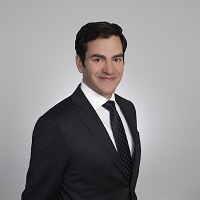Northland Power is a global developer, owner and operator of sustainable infrastructure assets in Canada, Europe and other selected global jurisdictions. Our facilities produce electricity from renewable resources such as wind, solar and biomass (organic matter used to create steam, driving turbines and producing electricity) and clean-burning natural gas. We actively seek to invest in technologies and jurisdictions where we can apply an early mover advantage and establish a meaningful presence.
At the end of the day, whether you’re selling goods into a new market, looking to set up an affiliate relationship there, buying a new business overseas—or in our case, building and operating a power facility in an international location—you need to do your homework. There’s a world of opportunity out there, but it comes with varying degrees of risk.
Growing out of Canada
Like many companies across Canada, we discovered that achieving continual growth meant that we had to look beyond the country’s shores.
The by-product of international expansion is that you get better at it over time. Make no mistake, every market is different. You need to do extensive research to determine if there’s a good fit for each one.
For us, international development came in the shape of offshore wind in the Netherlands and Germany, followed by solar in Mexico, where we set up offices to oversee each new project. We’ve also entered Asia through an offshore wind project off the coast of Taiwan, as well as established agreements to develop renewables in Korea and Japan. And last but not least, we recently acquired a regulated utility in Colombia.
The by-product of international expansion is that you get better at it over time. Make no mistake, every market is different. You need to do extensive research to determine if there’s a good fit for each one. After you’ve gone through that exercise once, you can apply the same principles again and again. I’d like to share two of the most important ones here.
1. Develop a risk register
Risk comes in all shapes and sizes, and it can have vastly different effects depending on the industry. These are some fairly standard risks you should consider when researching and evaluating any potential market:
- Political
- Financial and economic
- Social
- Legal and regulatory
- Operational
- Environmental
- Cyber
- Supply chain
As you can see, a great deal of due diligence is required before you act. Throughout your discovery process, you should capture that information in the form of a risk register, which is a matrix that tracks the potential risks in a market.
Once you’ve identified those risks, you’ll need to quantify them. For example, is the risk something that’s happening in-market now…or something likely to happen in the near, medium or long term? How likely is it to happen, and might that likelihood rise over time? Will it be short-lived or have more sustained consequences? Since you’re dealing with future events, there are no absolute answers, but the overall process will provide you with a thoroughly considered assessment.
Large corporations use sophisticated algorithms in performing risk analysis. But businesses on a much smaller scale can do virtually the same thing, using an Excel spreadsheet. To break it down:
- Identify the risk
- Determine the likelihood of it happening
- Evaluate your exposure and the potential consequences
- Develop an action plan in response
It’s a scalable tool that’s as valuable to a small retail operation looking to expand into the United States, as it has been to our global operations. Just don’t forget one of the most important parts in the process: periodic reviews. Risks aren’t static, so you’ll need to keep on top of each market to routinely re-evaluate the various risks, and potentially re-plot likelihood, exposure and response accordingly.
2. Make a foundational commitment to the market
If I had to sum up where your headspace should be before you take a leap, it would be that you need to have a foundational conviction in the long-term viability of the market. That conviction will get you through the difficult times—as there’s no such thing as zero risk.
Case in point: In 2016 we acquired a majority interest in an offshore wind project off the coast of Taiwan. This was a risky market for a couple different reasons. The renewables industry is still developing in Taiwan and there was a particularly contentious election cycle in 2018 which caused uncertainty for the future of its development. Regardless, we did our research and signed onto this project because we believe it has long-term viability and its underlying macroeconomic indicators were sound. This is especially critical for operations like ours, which require huge investments, with an associated need to generate value over the next 20 to 30 years.
In our experience, every market shares the same general risks, but as mentioned before, they occur in different degrees. Let me reference a few pages from our own playbook to illustrate.
- Take Europe, for example. Because we’re building long-term infrastructure assets, we’re especially cautious of market and regulatory risks. We must always carefully consider the legal framework and political environment to ensure the project will deliver value over the long term.
- In emerging markets like in Latin America, we need to have a good sense of currency valuations and interest rates. There tends to be higher volatility with lesser traded currencies, and a reduced ability to hedge these risks over the longer term, so it’s more difficult to protect yourself economically. There can also be heightened political and regulatory risk in this region, as well as security risks in certain jurisdictions.
- Sometimes the risk is as basic as time zones. In addition to currency, regulatory and political risks, projects in Taiwan and Japan can be difficult because of the significant time difference. Trying to remotely manage operations from Canada is not feasible. So, we have ensured that there’s the appropriate oversight in place in both countries. These international teams may be lean, but each is vested with enough authority to remain relevant, effective, and most importantly, compliant.
When cultural confusion becomes a risk
This last point is not a principle of risk assessment per se, but it’s a critical lesson we learned in our global expansion. Put another way, if you don’t do this properly—and by this, I mean, understand and navigate the cultural differences in each market—it can turn into a risk for your business.
One of the most fun and exciting components of global business is that everybody does things differently. One of the biggest traps you can fall into is making assumptions based on your culture’s norms. Body language, verbal and written communication and negotiating techniques all vary in ways you can’t always predict if you aren’t knowledgeable. Make sure you have the means to thoroughly understand the international markets you enter, because there’s no pleading ignorance in a court of law, or in the eyes of the people you’re doing business with around the world.
This is a guest blog post. Please note that the thoughts and opinions of the author may not necessarily reflect our own.






